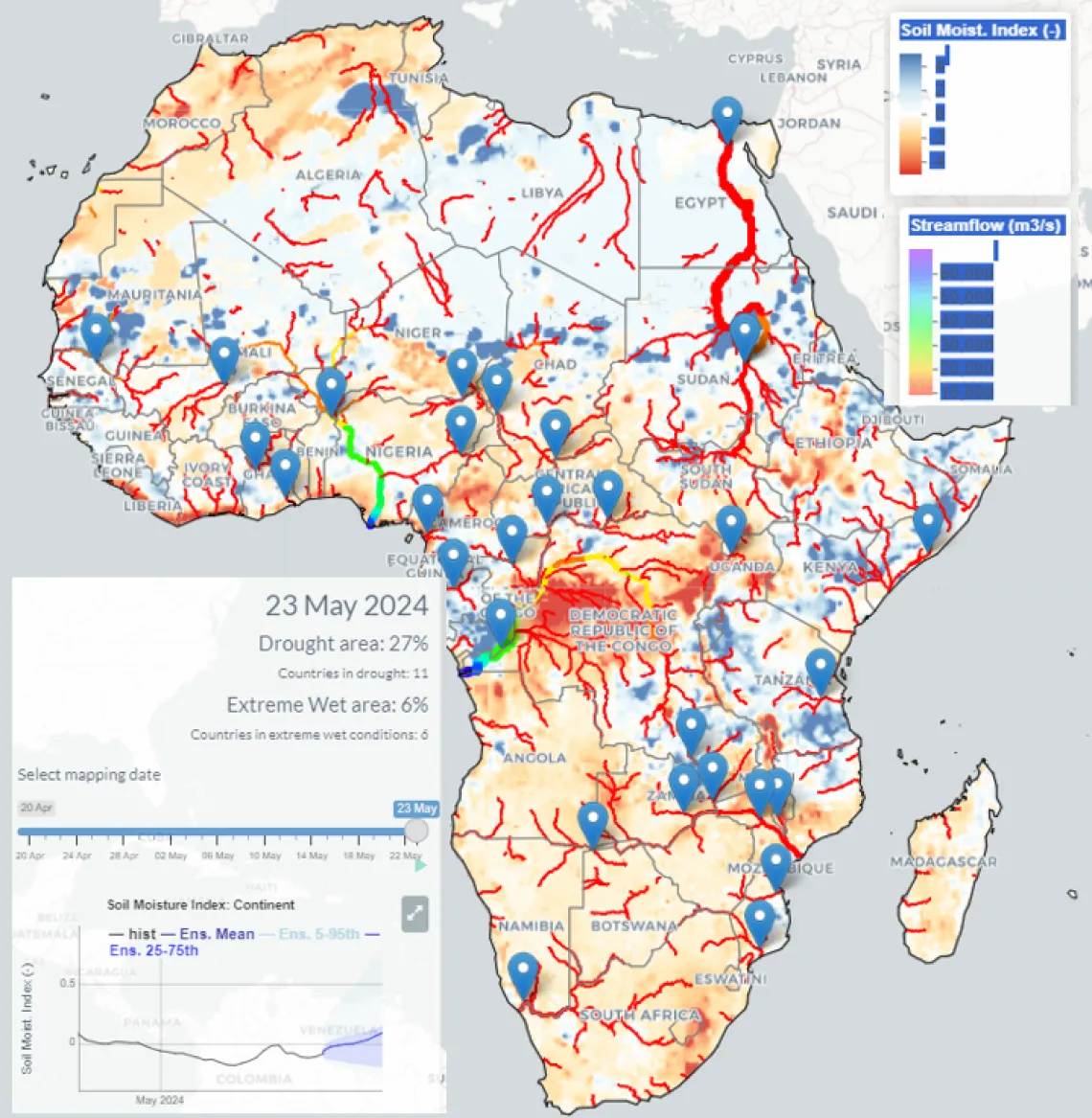African Flood and Drought Monitor used in NOAA's Global Climate Reports and Drought Narratives

African Flood and Drought Monitor.
Source: https://hydrology.soton.ac.uk/apps/afdm/ .
The African Flood and Drought Monitor (AFDM) provides near real-time monitoring and forecasting of hydrological conditions for operational and research use over Africa. The AFDM and its country-scale products were developed by Princeton University and Princeton Climate Institute, in collaboration with G-WADI and USACE’s International Center for Integrated Water Resources Management (ICIWaRM). now maintained and updated by the University of Southampton, UK,
The AFDM is a state-of-the-art tool that combines historical and near real-time monitoring of hydrologic conditions plus short-term and seasonal forecasting. It uses available satellite remote sensing and in-situ information and a hydrologic modeling platform to track changes in hydrological conditions and provide early warning of extreme events, and delivers this information through an intuitive web-based user interface.
In recent months, the AFDM has been used by NOAA's National Centers for Environmental Information (NCEI) as part of their Global Drought Narratives and Global Climate Reports and . In particular, the AFDM's estimates of the percentage of the Continent experiencing drought is being used to determine monthly trends in African drought.
The monitor has also been used to study and improve water security and regional security throughout Africa through studies of drought resilience, infrastructure impacts, epidemics, migration, and child health.
